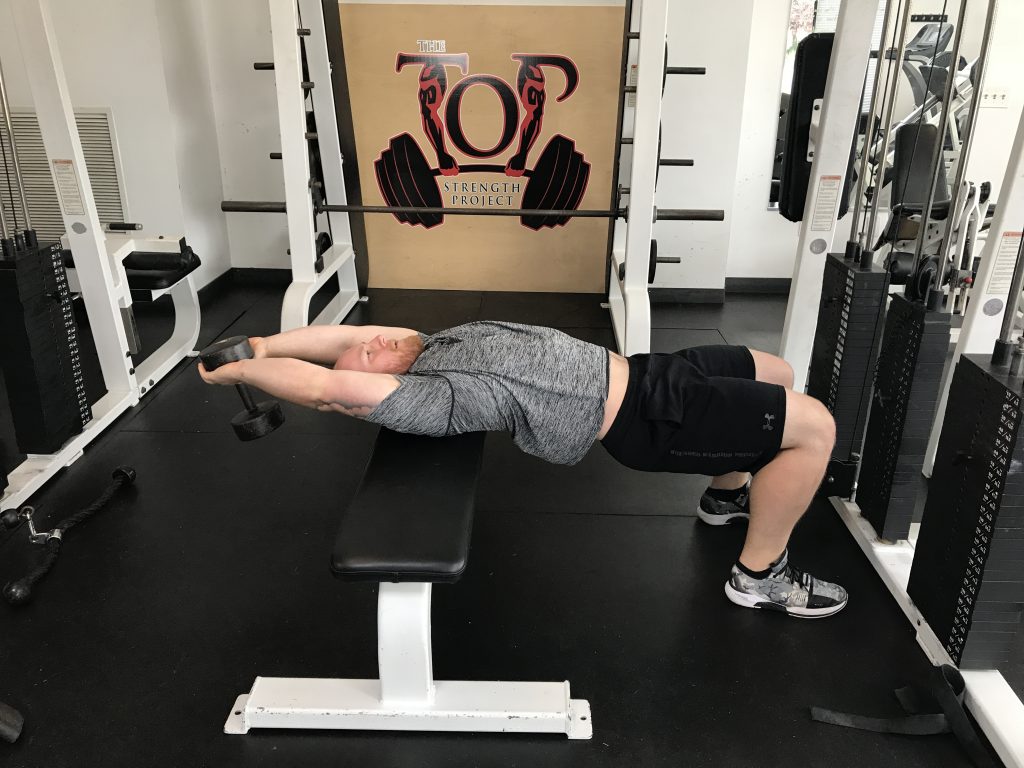
Stretching is arguably the most common form of exercise. Almost everyone could stand to stretch more — or at least more efficiently. In fact, there are more effective ways to stretch than the standard static stretching.
Static stretching is where you slowly ease into a stretch to the point of mild discomfort and hold it for 30 seconds or longer. Think sitting down and reaching for your toes to stretch your hamstrings. Old-school stretching like this is outdated and has been shown to be less effective for gaining long-term flexibility compared to higher-tension forms of stretching, such as partner-assisted contract-and-relax stretching.
If you don’t have a partner but still want to use high-tension stretching, try adding weights like dumbbells, kettlebells or medicine balls to your stretching exercises. While this sounds like adding insult to injury (figuratively, not literally, of course), the goal should be to gain strength and control of your muscles and joints in new ranges of motion, not just to gain new range of motion at all costs.
For example, if you can do a split, that means you’re flexible, but if you have to nearly dislocate your hip to do a split, that’s not good. You want the muscles of your hips to control that flexibility, which is where weighted stretching helps.
Here are three reasons weighted stretches can help you get stronger and more flexible:
1. STRETCH THE RIGHT MUSCLES
Stretching is more complex than you think — not all stretches are created equal.
Take the common hip-flexor stretch, for example. Many people do this stretch incorrectly by arching the lower back and disengaging the core muscles, so they feel it in the front of their hip crease. They end up stretching their anterior hip ligaments (which don’t like to be stretched) instead of their hip-flexor muscles.

A simple fix: Hold a light dumbbell or kettlebell in the goblet position and gently “crunch” your abs on top of the weight. This automatically turns on the core muscles, which shifts the stretch to the hip flexors in the middle of the thigh.
More core engagement during any lower-body stretch ensures your hips and lower back stay in a safe position. Adding a light weight does the trick.
2. STRETCH OVERLY STIFF MUSCLES
Some muscles get so stiff it’s tough to stretch them by yourself. If you don’t have a partner to assist you, you can use a weighted stretch for added resistance.
For example, many experienced lifters or athletes develop stiff latissimus dorsi muscles (also known as “lats,” the “pullup” muscles under your armpits), making it difficult to reach overhead. Traditional lat stretches only supply so much tension, whereas a weighted exercise such as the dumbbell pullover allows gravity and the extra weight to assist in the stretch.
Similar to the aforementioned hip-flexor stretch, make sure to engage the core by bracing your abs as if you were about to get punched in the stomach. This ensures the lats get stretched and the “ball” of your shoulder’s “ball and socket” joint doesn’t travel too far out of the socket, which could lead to injury.

Avoid letting your lower back arch and your belly suck in. This demonstrates a lack of control of your flexibility, defeating the purpose of weighted stretching in the first place.
3. “OWN” NEW POSITIONS
Perhaps most important, weighted stretches help you “own” new positions. While stretching adds flexibility, strength training can make it “stick,” so you don’t have to constantly stretch to maintain your flexibility.
The dumbbell goblet cossack squat is a perfect example. Rather than sitting on the floor in a butterfly stretch for improved groin flexibility, try holding a dumbbell at your chest, spreading your feet as wide as you can and shifting side-to-side. The added weight helps you sink lower than you could alone, while the tension necessary to stay on your feet helps you control any flexibility you gain.
HERE’S TO STRONGER STRETCHING
Remember: With weighted stretches, start light, go slow and never push into painful positions. While there’s still a place for old-school static stretching, weighted stretches help you gain flexibility faster and “own” that new motion in whatever athletic endeavors you pursue.
The post 3 Reasons to Do Weighted Stretches appeared first on Under Armour.
(via MyFitnessPal Blog)






